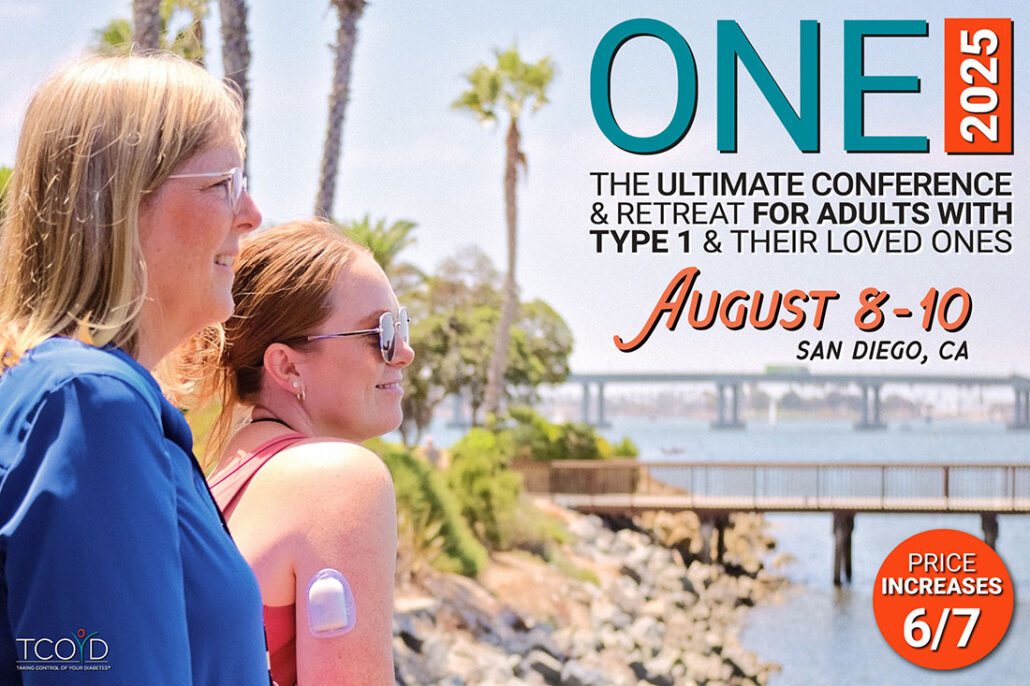
Living with diabetes is a huge pain, but living with diabetes in Alaska can be an even bigger pain. It can take longer than average to get supplies sent to you, and access to the latest education, tools, and resources can be harder to come by. None of these obstacles have stopped Mary Larsen from living an adventurous life with diabetes, however, and she set the stage early on with a self-diagnosis on her 28th birthday.
“I went to a health fair and had blood work done, and my blood sugar was 126. I had also gone from a size six to a size two without even trying, so when I saw the blood test, I knew I was diabetic.” Her doctor didn’t believe her, but Mary was insistent. Finally, her suspicions were confirmed, and she flew to Seattle for a week-long diabetes class. The class combined type 1 and type 2 diabetes education, and the program focused primarily on losing weight and eating low-fat foods. The educators glossed over insulin pumps and encouraged everyone to take insulin shots instead. Mary sensed that the strategy wasn’t going to work for her, so she started doing her own research.
“About six months later I read more about insulin pumps and I thought, why is my life conforming to two shots a day when I could be using a pump?” She got hooked up with a Disetronic and has been pumping ever since (currently with an Omnipod). “Now I live my life and tell the pump what to do instead of the shots telling me what to do.”
Mary continued her quest for more in-depth care, and flew to Seattle annually to see various endocrinologists. Unfortunately she never got much out of the long and expensive trips and eventually stopped going. Then in October of 2019, a friend convinced her to attend a TCOYD conference in San Diego. Not one to be put off by a 2000-mile geographic obstacle, she hopped on a plane to give it a shot.
“The conference blew our minds! There were real people living with diabetes leading lectures, and they weren’t telling you high-level endocrinology stuff as much as they were telling you practical things like how you extend the life of a sensor. Those are the sorts of things we need to know. We don’t want to hear how we’re going to be blind when we’re 90, we need to know the day-to-day tricks. The speakers were more concerned about our well-being and giving us the best information from a type 1’s perspective.”
As a result of the conference, Mary started using inhaled insulin (Afrezza), bought a ketone meter, and asked her doctor for BAQSIMI (emergency glucagon).
“I sat in those presentations taking pictures with my phone, texting slides back to my diabuddies in Alaska…how to restart the G6, DKA, time in range, standard deviation…
I got way more out of that conference than 20 years of endo visits. I wanted to support your group because it’s done so much for us – it’s just absolutely changed our lives.”
One thing that’s stayed consistent for Mary is her determination to live the super-active lifestyle she loves. “This year I did a lot of 10-day boat trips by myself, and people are horrified by that. But when I’m by myself I can focus on boating and diabetes. My control is so much better, and I feel so much safer. I get a lot of remarks about doing things by myself, but I think the key to successful management is not being distracted. When you get distracted, whether it’s other people or work or whatever, that’s when the blood sugar starts to go off and you get behind.”
Connecting with people who understand what it’s like to live with diabetes has also been key.
“Most of my friends have no idea about the personal struggles living with diabetes, or about the fact that I’m constantly thinking about it. When I’m with my diabuddy though, it’s a totally different story. We go boating, open-water swimming, paddle boarding, hiking, skiing and day-drinking in remote areas, and with each other’s support, we manage to have lots of fun and stay alive. Doing these things with someone else who has to be mindful of blood sugar is so much easier than trying to keep up with people who don’t have to think about it.”
With 30 years of T1D under her belt, she offers advice to those newly diagnosed or anyone looking for a little more support. “Try to connect with others with type 1 because you’re going to need to know where to find a doctor, where to order supplies, what pumps to use, etc. I’ve gotten a lot out of Facebook. The only thing I do on Facebook is diabetes stuff, but that’s where you see people talk about problem solving. Also, read things from TCOYD and get a CGM on Day One!”
Those of us who prefer a pool floatie to a solo ocean voyage may need to explore more land-based adventures, but Mary’s dedication to what floats her boat is a good reminder for all of us to continue to pursue our passions while bringing diabetes along for the ride.
If you would like to support TCOYD’s diabetes educational programs, please click below.


Leave a Reply